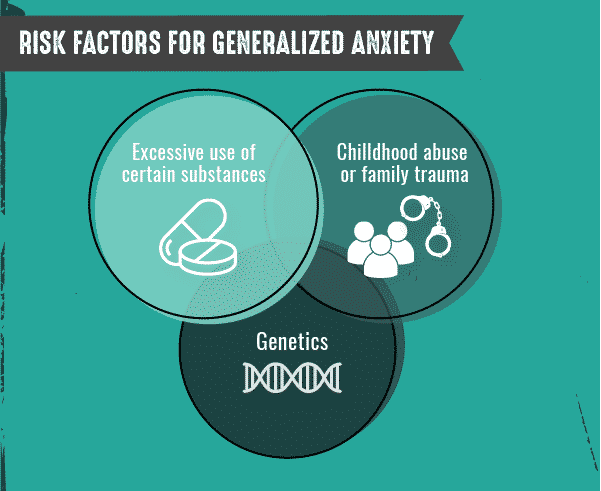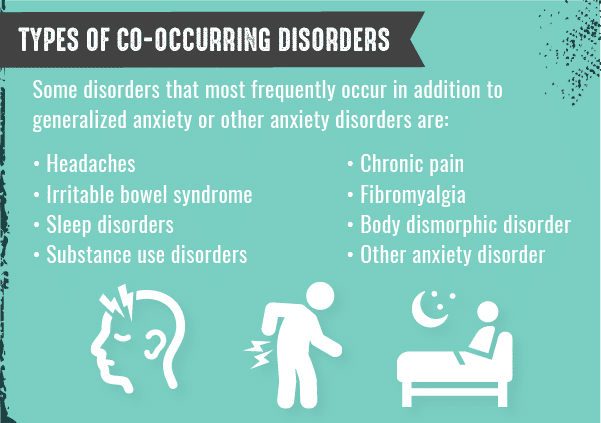For an individual with an anxiety disorder, feelings of anxiety do not just go away and may get worse over time. The symptoms can interfere with daily activities such as work productivity, school, and relationships. There are numerous categories of anxiety disorders, including generalized anxiety disorder, panic disorder, and various phobia-related disorders. Each type comes with its own unique fears and symptoms.
Tag: Mental Health
What is Anxiety?
While normal stress might cause an individual to be fearful of a dangerous object, animal, or situation; a person with anxiety would experience fear and avoidance of an object or situation that poses little or no danger at all. Anxiety disorders differ from the normal feelings of nervousness or worry and include excessive fear that is usually irrational.
Anxiety Disorders
Anxiety disorders differ from the normal feelings of nervousness or worry, and include excessive fear that is usually irrational. For an individual with an anxiety disorder, feelings of anxiety do not just go away and may get worse over time.
Most people have experienced a time when they felt overwhelmed with work, personal issues, or maybe even had a huge fight with a significant other. These situations can lead to stress or worry, and almost everyone experiences this feeling at some point in their life. Anxiety is a normal emotion. It can affect an individual emotionally as well as physically, even causing serious health issues.
Worldwide Impact of Anxiety Disorders
Anxiety statistics worldwide show that anxiety disorders are common across the globe. According to the World Health Organization, 3.6 percent — or about 264 million individuals worldwide — have an anxiety disorder. Additionally, 4.6 percent of females and 2.6 percent of males globally are affected by anxiety.
Rates of Anxiety and Co-Occurring Health Conditions
Anxiety is likely to occur together with other mental health conditions. According to current research, the following health conditions commonly co-occur with anxiety disorders:
- Depression: Anxiety and depression are closely linked, with 61.2 percent of people who experience a generalized anxiety disorder during their lifetimes also experience a major depressive disorder.
- Mania: Approximately 3.1 percent of people with lifetime generalized anxiety disorder will also experience mania.
- Substance Use Disorders: Anxiety disorders and substance abuse can occur together, as 42.8 percent of people with lifetime generalized anxiety disorder will also experience a substance use disorder during their lives.
Statistics on Generalized Anxiety Treatment and Recovery
When someone is diagnosed with generalized anxiety, there are several courses of treatment a medical provider may consider. Typically, a combination of treatment approaches may be used for GAD.
Recovery from generalized anxiety disorder is possible. The recovery rate is around 57 percent with a psychotherapy approach according to Psychology Today. However, because of the difficult nature of treating GAD, this rate could be higher with the inclusion of other forms of treatment like medication or alternative therapies.
Ranging from 50 to 60 percent of patients who receive therapy for GAD do show a positive response. Factors that can impact the response to treatment include the quality of care, the provider’s experience in treating GAD and the duration of treatment. Typically, the longer someone remains in a treatment program or receives ongoing treatment, the better their outcome may be.
While treatment can significantly help someone with GAD manage their symptoms, many people don’t seek treatment. The generalized anxiety disorder treatment rate is relatively low because of various factors.
For someone living with GAD, seeking treatment is important to alleviate symptoms and improve quality of life. To learn more about treatment for co-occurring anxiety disorders and substance use disorders, contact The Recovery Village and a representative can help you learn more about which treatment program could work for you.
Risk Factors for Generalized Anxiety Disorder
While there’s not one factor or combination of factors that can determine whether someone will have GAD, there are certain risk factors of generalized anxiety disorder that may increase the likelihood. Generalized anxiety disorder risk factors can include:
- Family members with a history of anxiety disorders
- Childhood abuse or trauma
- Excessive use of certain substances including caffeine
- Ongoing, prolonged exposure to stressful environments or situations

Generalized Anxiety and Co-Occurring Disorders
It’s common for people with an anxiety disorder to also have a co-occurring mental health disorder or physical health condition. This is referred to as a co-occurring disorder.
Research shows that among people with GAD, more than 90 percent have another psychiatric diagnosis. Major depressive disorder is the most common, 48 percent of patients are also diagnosed with generalized anxiety disorder. If someone has co-occurring disorders, all disorders need to be effectively treated. Otherwise, the symptoms of anxiety can be more severe because of the co-occurring disorder component.
Some disorders that most frequently occur in addition to generalized anxiety or other anxiety disorders, not including depression, are:
- Headaches
- Irritable bowel syndrome
- Sleep disorders
- Substance use disorders
- Body dysmorphic disorder
- Chronic pain
- Fibromyalgia
- Other anxiety disorders

Generalized Anxiety in Adults
How many American adults suffer from generalized anxiety disorder? When it comes to generalized anxiety disorder in adults, it was reported that an estimated 6.8 million adults are affected during a year, or 3.1 percent of the population in the United States.
Globally around four percent of people may experience generalized anxiety disorder at some point in their life and the median age of onset for GAD is 31-years-old. The symptoms tend to appear more gradually than other types of anxiety disorders.
Learn surprising facts and statistics about generalized anxiety disorder.
Generalized anxiety disorder (GAD) is a mental health condition characterized by specific symptoms. These symptoms include ongoing and excessive worry about different concerns. The worry isn’t limited to one particular reason or source.
When someone has generalized anxiety disorder, they may worry about health, their family, relationships, work, money or other matters. The sense of worry feels out of control for the person experiencing it and someone’s worry may be out of proportion to actual events or it could be linked to no specific reason at all.
A diagnosis of GAD means that someone has a sense of worry that’s uncontrollable or difficult to control for at least six months according to the Anxiety and Depression Association of America (ADAA). Other possible symptoms of generalized anxiety may include:
- Feeling irritable or edgy
- A sense of nervousness
- The feeling of impending doom, danger or panic
- Rapid heart rate and breathing
- Sweating
- Trembling
- Feeling tired or fatigued
- Concentration problems
- Sleep disturbances
- Gastrointestinal symptoms
Generalized anxiety disorders statistics and facts tend to showcase how pervasive this mental health issue is. People may feel alone when they live with an anxiety disorder until they learn more about generalized anxiety statistics and how common it is.
